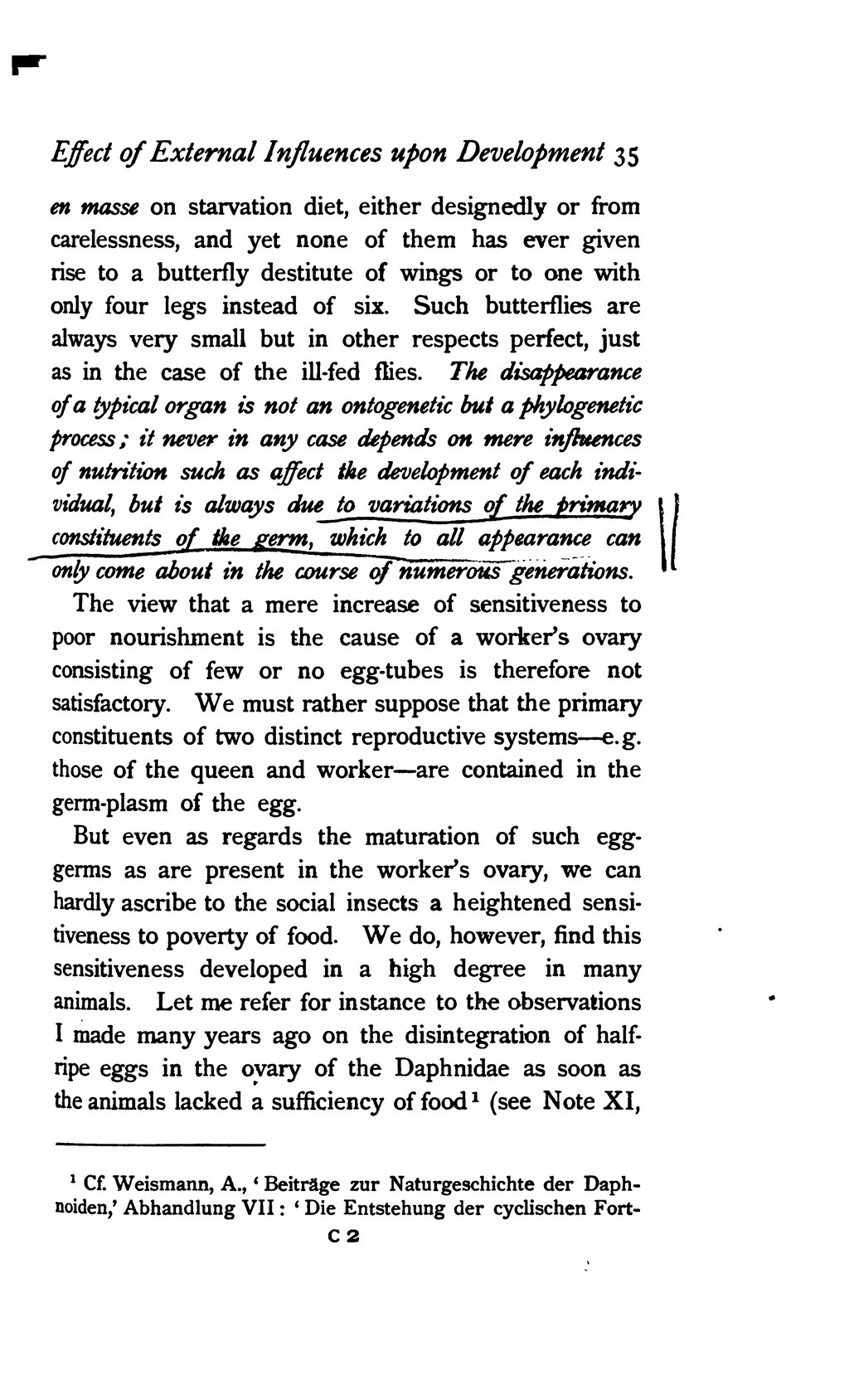en masse on starvation diet, either designedly or from carelessness, and yet none of them has ever given rise to a butterfly destitute of wings or to one with only four legs instead of six. Such butterflies are always very small but in other respects perfect, just as in the case of the ill-fed flies. The disappearance of a typical organ is not an ontogenetic but a phylogenetic process; it never in any case depends on mere influences of nutrition such as affect the development of each individual but is always due to variations of the primary constituents of the germ, which to all appearances can only come about in the course of numerous generations.
The view that a mere increase of sensitiveness to poor nourishment is the cause of a worker's ovary consisting of few or no egg-tubes is therefore not satisfactory. We must rather suppose that the primary constituents of two distinct reproductive systems—e.g. those of the queen and worker—are contained in the germ-plasm of the egg.
But even as regards the maturation of such egg-germs as are present in the worker's ovary, we can hardly ascribe to the social insects a heightened sensitiveness to poverty of food. We do, however, find this sensitiveness developed in a high degree in many animals. Let me refer for instance to the observations I made many years ago on the disintegration of half-ripe eggs in the ovary of the Daphnidae as soon as the animals lacked a sufficiency of food[1] (see Note XI,
- ↑ Cf. Weismann, A., 'Beiträge zur Naturgeschichte der Daphnoiden,' Abhandlung VII: 'Die Entstehung der cyclischen Fort-
